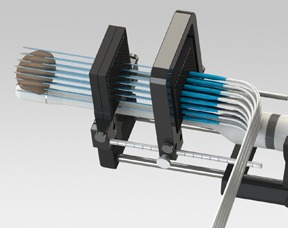Cryotherapy utilizes extreme cold temperatures of -40 degrees celsius to freeze and eliminate cancerous tissue within the prostate gland. Cryotherapy is performed by the insertion of a thin metal needle or probe inserted directly into the prostate gland. To facilitate this insertion a small incision is made between the anus and scrotum. Additional care is given to protect the urethra from the colder temperatures by administering a flow of warm saline through a catheter. The surgeon performing the procedure will also use visual data taken by ultrasound for use as a visual reference guide. By utilizing the ultrasound images the surgeon can easily identify the cancerous tissue thereby any potential damage to healthy prostate tissue. Many experts believe that Cryotherapy has the potential to effectively treat recurrent prostate cancer in cases where traditional methods such as Radiation Therapy have failed.
How It’s Done
The surgeon will insert the needle directly into the prostate gland and infuse it with a freezing liquid such as nitrogen or argon gas. Heat is then drawn from the prostate gland and as a result of the extracted heat a swell of ice crystals or “ice balls” to form. This then causes the cell membranes to rupture causing cellular damage and finally destroying the cancerous cells. Afterwards white blood cells will take care of any dead cells or tissue remaining in the prostate gland.
Be sure to ask your doctor any questions you might have about the procedure, how you need to prepare and what special measures you should take before the day of the treatment. Typically, you should not eat for at least 6 hours before. Fluids are allowed up until 4 hours to the procedure. It is common that your bowel has to be empty for the treatment. You may have an enema in order to clean everything in your bowels or take a laxative.
During the procedure, which usually lasts between 1 or 2 hours, an anesthesiologist will administer you local or general anaesthetic, which will make the cryotherapy be pain free. In the case of local anaesthetic, it’s common to have sedative medicine that helps you relax and feel sleepy.
After the procedure, the doctor will recommend how long you will need to have a catheter that facilitates the flow of urine from your bladder. It could last for the next 1 to 2 weeks. You will need to be careful with your daily activities, at least for as long as the catheter is still in. You will be able to go about your daily life usually a few hours after the procedure, but should avoid lifting heavy weights or other types of activities. Your perineum will have to be kept dry and clean so expect some dressing to cover it up.
Most patients leave the hospital the exact same day, but doctors will let you know if you’ll be required to spend the night in a patient’s reserve. In case you had general anaesthesia, you will have to make arrangements so that someone will drive you home. Sedatives will take a while to wear off, so it might be dangerous for you to go home that day. Over the next few weeks, your body’s immune system will eliminate the damaged prostate tissue.
Advantages to Cryotherapy
Several studies on Cryotherapy as a treatment for prostate cancer highlight many of the advantages it has over surgery and radiation therapy. Some of those advantages seem to be prevalent amongst patients with early stage prostate cancer. Advantages for choosing Cryotherapy include:
- Less invasive than many procedures
- Short recovery time
- Reduced blood loss
- Favorable success rate
Side Effects
As with any type of treatment for prostate cancer there is always the potential for side effects. While the studies on Cryotherapy have shown its promise many experts feel that it effectiveness in eliminating prostate cancer stills requires further study. Some of these side effects include:
- Urinary Incontinence
- Erectile Dysfunction
- Infection
- Blood in urine
- Swelling of the penis and scrotum
- Obstruction of the urethra
- Injury to the urethra or bladder
Although instances are rare there is also a chance that Cryotherapy can damage other tissue and organs near the prostate gland. Discuss all of your options with your doctor before deciding to proceed with Cryotherapy. Even if Cryotherapy fails in eliminating a patient’s prostate cancer it can still be followed by other standard treatments such as Radiation Therapy.


